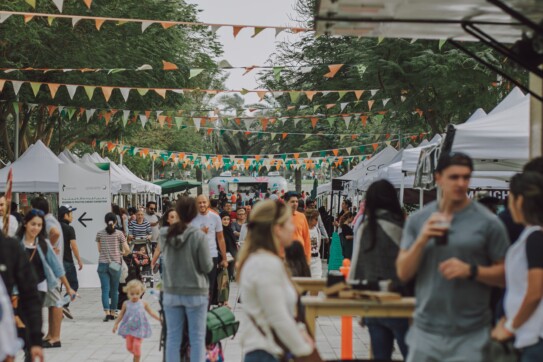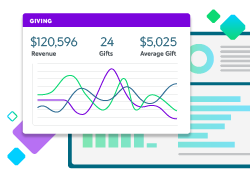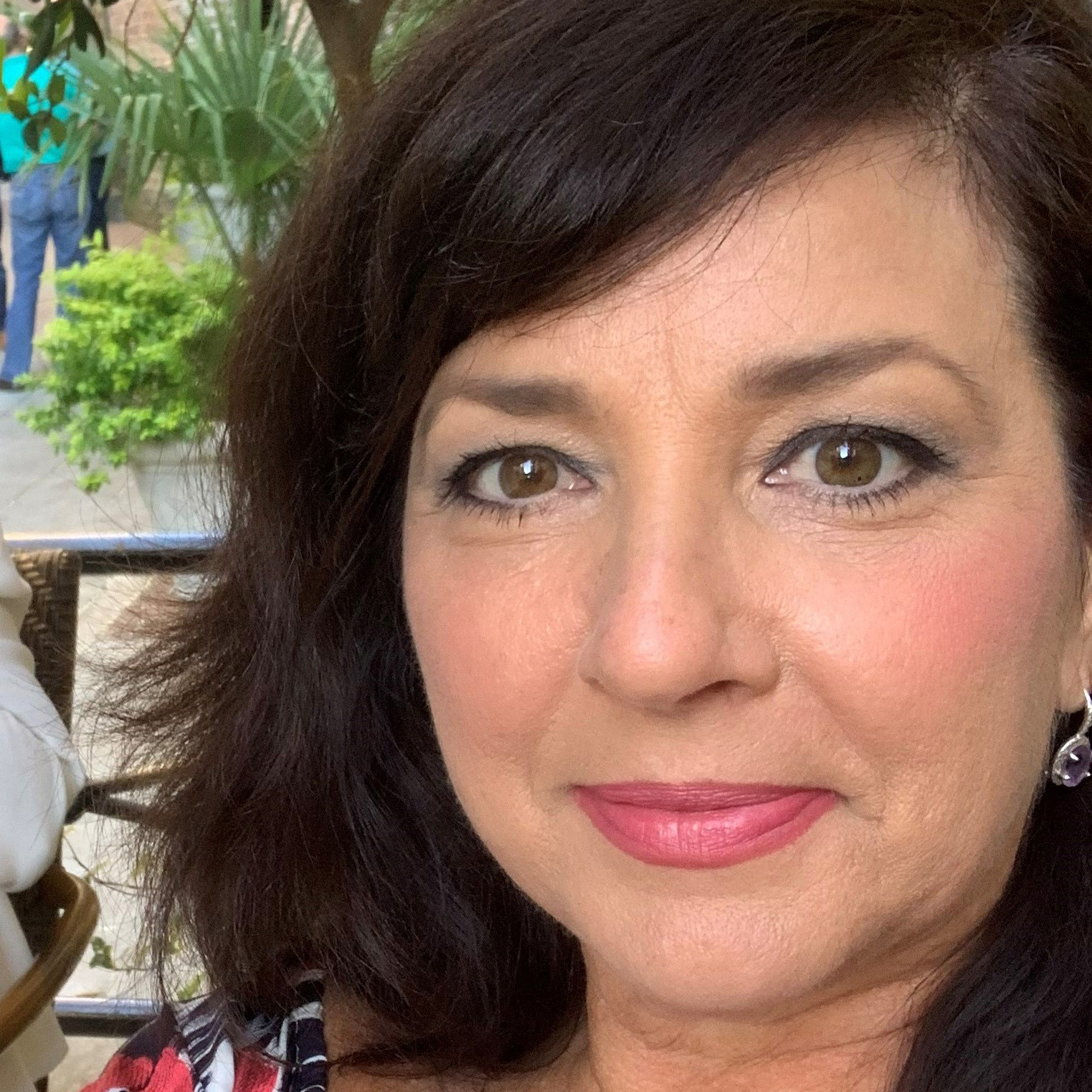How to Convert Peer-to-Peer Event Participants into Monthly Donors

If your nonprofit organization hosts a peer-to-peer event with thousands of happy participants and supporters, but you don’t have a plan to convert those bikers, gamers, walkers, golfers, dancers, scavenger hunters, or pub crawlers into monthly donors, you’re missing out on the point of putting on an awesome P2P event. It should never be a one-off experience. Done right, your P2P event can be a ready-made source of excellent prospects for your sustainer program. Best of all, you really only need to adopt a few proven and productive cultivation and engagement methods to start converting your peer-to-peer event participants into monthly donors.
Four Strategies to Transform P2P Participants into Loyal Supporters
You can build systems and processes from scratch to make it easier for P2P participants to become sustaining monthly donors. Or you can learn from the experts, following the lead of four successful P2P events that have cultivated one-time participants into committed supporters.
Experiment with Journey Mapping
A colorful visualization of the constituent experience, journey mapping is a model that helps you track how and when you engage with supporters and when and why they make the giving choices they do. It’s a common practice for commercial enterprises. They start by creating personas, then identify the various stages of their connection to the company. Often the sales funnel is part of the visualization:
- Awareness
- Evaluation or Consideration
- Engagement or Decision
- Action or Donation
- Advocacy or Loyalty
Michael Johnston, co-founder and president of HJC New Media, encourages nonprofit organizations to take a page from the mapping playbooks of for-profit enterprises.
“Fortune 1000 companies believe in customer experience mapping as the way to improve and create a sustainable differentiator in a competitive marketplace,” he said. “P2P fundraising is a heck of a competitive space. If mapping on the commercial side is seen as the last remaining sustainable differentiator, then that kind of idea should be important for us in the nonprofit sector, too.”
Donor journey mapping can help you identify where your outreach stagnates, why participants in a peer-to-peer event fail to become advocates, and why well-qualified donors lapse.
Team Diabetes knew its P2P endurance event was flatlining. The leadership team wanted to identify ways to improve the event, expand registrations, raise more money, and turn loyal supporters into sustaining and major donors.
They turned to donor journey mapping. With HJC’s help, they developed personas and envisioned their journey as a funnel, with lead conversion at the top. Their goal was to ensure the person coming to sign up for the event followed through.
Here’s how Team Diabetes created improvements based on the lessons learned from the donor journey map.
- Sprucing up the landing page: Because overloading the audience is an invitation to click away, they made the site less complicated, more attractive, and easier to navigate with only enough content to keep up interest in the registration process.
- Improving the registration form: What had been a voluminous, overwhelming form became streamlined, user-friendly, and effective.
The results for the Team Diabetes P2P event included 56% more people signing up for the event, roughly $520,000 more in donations, and abundant leads ripe to convert to monthly giving.
Turn Your P2P Event into a Lifestyle
Kristine Rauh, associate vice president of the BikeMS Experience from the National Multiple Sclerosis Society, is a firm believer in transforming P2P events from a stand-alone experience into a lifestyle. Full-on, year-round engagement builds authentic connections and a sense of community that keeps supporters coming back. To create sustained engagement, the BikeMS team takes the pulse of its 50,000 riders at more than 50 annual events.
“We ask a lot of questions. We truly understand our riders and make core decisions about the BikeMS experience from their input,” Rauh said.
Her four tenets of cultivating a lifestyle from a P2P event:
- Create year-round opportunities for supporters to be together apart from the main event. BikeMS organizers arrange kickoff events, meet-ups, cycling safety clinics, social hours, and other non-scripted events that have no agenda other than building the BikeMS culture and helping supporters make personal connections.
- Build unique partnerships that amplify the lifestyle. Since BikeMS is all about cycling, their partners include the gear company, Primal, and the bike brand, Trek, as well as Left Hand Brewery for post-ride celebrating.
- Plan an amazing event. The pinnacle moments of BikeMS feature unique locations across the country. Many sustaining supporters are riders who travel to event sites that are destination experiences.
- Personalize everything. From VIP treatment at the ride for top fundraisers to year-round multichannel marketing, the personalized approach emphasizes the BikeMS lifestyle, and the importance of each supporter’s individual role in riding, fundraising, advocating, and working to create a world free of MS.
The lifestyle model is working: BikeMS is the largest fundraising cycling series in the world and, as the largest revenue stream for the National Multiple Sclerosis Society, has raised $1.5 billion for the organization since the event was launched in 1980.
“BikeMS retains 60% of our cyclists year after year,” Rauh said. “And we retain 90% of our top P2P fundraisers each year, providing 80% of our annual budget.”
Optimize Participant Retention
The Multiple Myeloma Research Foundation is the only research foundation dedicated to finding a cure for this rare form of blood cancer. Every participant in the organization’s P2P events—from a walk/run to the epic destination trek called Moving Mountains for Multiple Myeloma—is vital to meeting their mission goal, so conversion and retention are key.
“We have found that a great participant experience can lead to more P2P fundraising and better retention year over year,” said Lisa Borsellino, senior manager of donor engagement and operations.
Here’s how MMRF keeps event attendees excited for what’s next:
- Offer no-barrier registration: When supporters sign up for an event, not only do they have a smooth registration on any device and automated follow-up detailing their next steps, but they also find it’s a zero-fee registration. This tactic means MMRF forgoes the typical $35 registration charge in favor of a nudge for registrants to begin fundraising right away.
“We now offer encouragement to fundraise to meet certain goals. It has paid off in spades. The people who do give tend to give a lot more than $35.”
Lisa Borsellino, The Multiple Myeloma Research Foundation
- Provide personal coaching: Once registered, participants are provided with immediate and frequent resources to help them train and to help them raise money for the cause. It could be tips and tricks via email. It could be a link to the leaderboard to inspire a little friendly competition. You can still make it personal, even if it’s an automated communication.
“We want to make sure they understand that we’re as vested in their success as they are in ours,” Borsellino said. “They need to feel supported.”
- Build feel-good “mission moments” into your event: MMRF awards the Spirit of Hope to a multiple myeloma patient or caregiver who serves as the event ambassador, often kicking off the event with an inspirational message.
- Keep the warm fuzzies coming. Stewardship after the fact is critical to converting attendees into monthly or major donors. Show them how grateful you are for the impact they’ve made through their participation and fundraising.
- Send personal notes from the CEO to top fundraisers.
- Deliver a post-event wrap-up with photos and statistics, including total dollars raised and number of attendees.
- Invite prime major donor candidates and monthly donors to additional events in their region to strengthen their ties to the community.
- Create a leadership circle to honor those who raise more than $25,000.
- Assign top fundraisers to a development officer’s portfolio so they receive 1:1 outreach from a gift officer.
In 2022, MMRF saw a nearly 32% increase in donors over the previous year and raised more than $45 million.
Go All in on Donor Data
Every nonprofit wants attendees who will stick with them after the event, but how do you know who is the best fit for your cause? Kaz McGrath, who cofounded the fundraiser Ration Challenge, a P2P event that challenges supporters to spend a week eating the same rations as a Syrian refugee, said organizers should not simply make their best guess. They must deeply understand what drives people to be interested in their mission. And that means analyzing data.
For the Ration Challenge, the team used a variety of methods to pinpoint the personas and behaviors of those interested in refugee issues.
- Explore identity and feelings: Use proposition testing; A/B test Facebook ads; conduct sentiment analysis.
- Identify preference for action: Create surveys; analyze behavioral data points; develop personas.
- Understand who influences them and whom they trust: Conduct content marketing testing, qualitative analysis, and social media listening (Do they follow celebrities vs. political commentators? What politicians do they support?)
- Determine their motivation and inspiration: Apply behavioral psychology and consider response rates and participant profiles.
The Ration Challenge constantly refined its audience groups to gain a clear picture of who should be included in their campaigns. Organizers discovered their optimal prospect was motivated by shame in how Australia was handling the refugee crisis, by connection to the cause, and by a sense of authenticity and belonging to the solution. The data also revealed that speed to action was an indicator of value, meaning self-sponsoring within a week of first contact was conversion gold.
The Ration Challenge also focused on content that McGrath called “Australian humor at its best,” using creative, sarcastic, and challenging language that their research told them would play well with their top prospects. The tagline, “Put your money where your mouth is” hit the right provocative note for their target audience.
Results? More than 99,000 donor/fundraisers have accepted the Ration Challenge in Australia, New Zealand, the United Kingdom, and the United States, raising $14 million to provide food and healthcare to refugees across the globe.
If you’d like to learn more about high-impact peer-to-peer fundraising that can feed your monthly giving program, check out the State of Peer-to-Peer Fundraising: A Three-Part Series webinar from Blackbaud.
The Nonprofit CRM Built for Fundraisers
Find out how Blackbaud’s Raiser’s Edge NXT® fits your organization.

